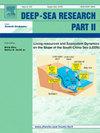Seasonal Indonesian Throughflow (ITF) across southern Java determines genetic connectivity of Sardinella lemuru (Bleeker, 1835)
Abstract
Sardinella lemuru populations are considered near-threatened in Bali Strait. Despite declining fish stock, documented landings of S. lemuru at the Prigi waters unexpectedly climbed during the 2nd transitional inter-monsoon season of 2019. Here we used a combination of molecular taxonomy and morphometrics-meristics to determine the genetic link between S. lemuru populations in East Java's southern seas (Prigi and Puger) and those in the Philippines. The results of both molecular and morphometric-meristic analyses suggest that extensive genetic mixing between the populations from Prigi and the Philippines is occurring. Most samples clustered with the S. lemuru populations from the Philippines in Clade-1 and Haplogroup A and B implied high genetic connectivity. The inferred patterns of haplotype network and haplogroup relative frequency indicate the dispersal, genetic homogeneity, and absence of geographical barriers between S. lemuru populations were also supported by a seasonal model of ocean circulation: during the southeast monsoon, greater Indonesian Through-Flow and South Java Current, followed by westward currents along Java's south coast. The findings of this study give much-needed evidence that S. lemuru populations disperse to a secondary fishing area (in Prigi waters), followed by high plankton abundance in 2019, as a result of ITF and local seasonal circulation. The unique sequences of Puger-2017 and the remainder of Prigi-2017 in Clade-2 with overall moderate genetic distance separated from Clade-1 because the Puger water mass are influenced by the Java Sea and Madura Strait or possibly migrated from their habitats in the western part of Indonesia or the Java Sea.

 求助内容:
求助内容: 应助结果提醒方式:
应助结果提醒方式:


